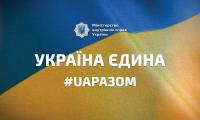
Since January 27, 2006, the international community has commemorated annually the victims of the Holocaust, one of the greatest tragedies in human history, in pursuance of the UN General Assembly resolution. This date was chosen not by chance. It was on January 27, 1945, that Major Anatolii Shapiro, a native of Krasnohrad, Kharkiv Region, and his soldiers released the prisoners of a real “death factory” of a group of concentration camps near the city of Auschwitz.
The Department of Social and Humanitarian Work of Kharkiv National University of Internal Affairs held a set of events on January 26-28. Eleven thematic video lectures were held for representatives of all Faculties, such as cadets, students, and master's cadets of Kharkiv National University of Internal Affairs, including with the participation of a representative of Kharkiv Historical Museum.
The lecture, accompanied by slides, focused on the history of National Socialism in Germany, its socio-psychological and ideological basis, as well as one of the components of this criminal political ideology - pseudo-scientific racial theory. The main result of the latter was the Holocaust.
Ukraine, whose territory was completely occupied by the Nazis during World War II, suffered enormous human losses. Due to the Nazi national-racial policy, the Jewish community of Ukraine lost, according to various estimates, more than 1 million people. At the end of the event, the audience observed a minute of silence in memory of the victims.
The creation of memorials to Holocaust victims at mass shootings of Jewish people in Ukraine has been continuing since the 1990s. On January 27, representatives of all Faculties - cadets and students - visited Drobytskyi Yar Memorial Park, where they laid flowers at the monument and listened to information about the tragic events that took place there 80 years ago.
Holocaust Remembrance Day calls for vigilance and the prevention of xenophobia and chauvinism in modern nations.
All measures were carried out in accordance with certain quarantine norms.